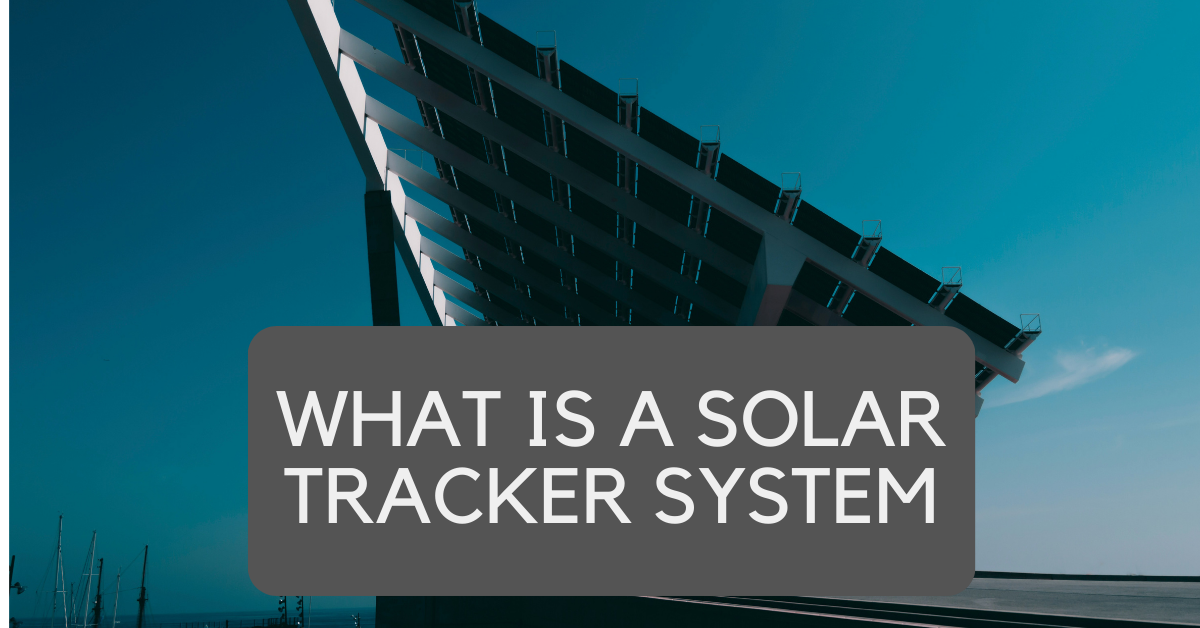In this article, we will explore the concept of a solar tracker system and its fundamental functions. The discussion will encompass various types, accompanied by brief comparisons. By delving into this topic, we aim to provide you with a comprehensive understanding of why a solar tracker system is a crucial component to consider when planning and designing your solar energy system.
Table of Contents
- Introduction : What are Solar Tracker Systems
- How Solar Tracker Systems Work
- Types of Solar Tracking Systems
- Advantages of using Solar trackers
- Considerations Before Installing a Solar Tracking System
- Conclusion : Final Solar Thought
Introduction : What are Solar Tracker Systems
As the most abundant and efficient among all renewable energy sources, solar energy has emerged as a frontrunner in the realm of energy production. With the continuous advancement of technology, the efficiency of harnessing solar energy has also witnessed remarkable growth. This progress not only maximizes the potential of solar power but also enhances its efficient utilization. The introduction of new materials and the development of cutting-edge technologies for solar panels, batteries and other components have played a pivotal role in the advancement of solar energy production.
Learn more about solar components.
One aspect that has not received adequate attention is the solar tracking system. There exists a misconception among people regarding this component, often associating it solely with larger industrial applications or assuming it requires a substantial budget. While it is true that technically the solar system can function without it, incorporating a solar tracking system is essential for truly optimizing solar power utilization. Investing in this technology may require additional funds initially, but the long-term benefits make it a worthwhile expenditure.
To learn more about advantages of using solar panels, follow and click me.
How Solar Tracker Systems Work
Let’s start with the basics..again. How do these solar trackers work.
In the traditional approach, solar systems and panels have been fixed in a single direction to collect energy. However, the effectiveness of energy collection and conversion varies throughout the day with the changing position of the sun. This fluctuation results in a higher output when the panels are perfectly aligned with the sun. This is where solar tracking systems come into play. These systems are designed as mechanisms that align solar panels or mirrors with the sun, ensuring optimal exposure to sunlight. This precise alignment significantly boosts energy output by maximizing the panels’ direct sunlight exposure, surpassing the productivity of stationary solar installations.

The primary idea behind solar tracking systems is to follow the sun’s movement across the sky. These systems use sensors, motors, and controllers to adjust the position of solar panels or mirrors, optimizing the angle of incidence for sunlight throughout the day.
Types of Solar Tracking Systems
Single-Axis Solar Tracker
Single-axis solar tracking systems move solar panels along one axis, either horizontally or vertically. This type of tracking is simpler and more cost-effective than dual-axis tracking but provides less accurate alignment.
Types of Single Axis Solar Tracker
Horizontal Single-Axis Solar Tracker
This particular tracker exclusively moves along a fixed axis, tracing a path from east to west. This axis runs parallel to the ground. It stands out as the most widely adopted tracking system, mainly due to its cost-effectiveness and the reduced amount of material needed during construction.
Horizontal Tilted Single-Axis Solar Tracker
This tracking system bears a striking resemblance to the horizontal single-axis tracker but is set at a specific tilt. The inclusion of this tilt makes it a bit more intricate and comes with a higher price tag, demanding sturdier concrete foundations for installation.
Vertical Single-Axis Solar Tracker
These trackers showcase exceptional versatility, allowing for mounting in both north/south and east/west orientations. This adaptability is designed to trace the sun’s movement, rising in the east and setting in the west. Their optimal application is in locations at higher altitudes.
Vertical-Tilted Single-Axis Solar Tracker
Similar to the Vertical Single Axis, this variant is installed with a tilt. Once again, this design adds complexity and demands a significantly larger amount of materials during construction. The base necessitates a robust foundation to ensure its stability.
Dual-Axis Solar Tracker
Dual-axis tracking systems move solar panels along both horizontal and vertical axes, allowing them to track the sun’s movement in two dimensions. This ensures a more precise alignment with the sun throughout the day, maximizing energy capture. Although more complex and expensive, dual-axis tracking systems offer higher efficiency.
This system employs either a sensor or GPS to determine the sun’s position, automatically adjusting itself to ensure all panels directly face the sun. It relies on motors and hydraulic arms for movement. The efficiency of this system is notable, resulting in an increased electricity generation of up to 40%. However, the drawback lies in the cost, as these systems tend to be on the expensive side.
Polar-Aligned Solar Tracker
Tailored to align with the Earth’s axis, this tracking system ensures meticulous positioning of solar panels, capturing the maximum sunlight throughout the day, including during polar day and night cycles.
The core principle guiding a Polar-Aligned Solar Tracker entails aligning solar panels parallel to the Earth’s axis. This strategic alignment compensates for the distinctive sunlight patterns near the poles, enabling the panels to adeptly follow the sun’s movement. This adaptation proves crucial in high-latitude areas where the sun may traverse a lower arc across the sky, presenting a scenario where traditional tracking systems might not perform as effectively
Advantages of Using Solar Tracker
Solar tracking systems offer a myriad of benefits, foremost among them being a substantial increase in energy production. Through dynamic adjustments in panel orientation, these systems effectively capture more sunlight, particularly during periods of lower sun angles like mornings and evenings. Additionally, they elevate the efficiency of solar panels by ensuring an optimal angle of incidence, allowing sunlight to strike the panels perpendicularly and thereby maximizing energy conversion.
Furthermore, the advantages extend to environmental considerations. Solar tracking systems contribute to a reduced carbon footprint by increasing efficiency, requiring less land to generate the same energy output as fixed installations. This adaptability extends geographically, with various solar tracking system types tailored to specific locations, accommodating diverse sunlight patterns whether near the equator or in polar regions.
Considerations Before Installing a Solar Tracking System
Before diving into the installation of a solar tracking system, several crucial considerations should be carefully evaluated. Firstly, the cost factor must be weighed against the potential long-term benefits. Although solar tracking systems promise increased energy production and efficiency, their initial investment is notably higher than that of fixed solar installations. It becomes imperative to conduct a comprehensive analysis to determine the economic viability of incorporating a solar tracking system into a specific project, taking into account the projected gains over time.
Another critical aspect is maintenance. Given that solar tracking systems involve moving parts, regular upkeep is essential to guarantee optimal performance. Familiarizing oneself with the maintenance requirements and associated costs is key in assessing the system’s long-term sustainability. Moreover, the spatial dimension plays a pivotal role, especially for dual-axis systems, which may necessitate more substantial land or space compared to fixed installations. An assessment of available space and solar array layout is crucial to prevent conflicts with existing infrastructure or environmental considerations. Lastly, the environmental impact should be considered across the entire life cycle of the solar tracking system, encompassing manufacturing, installation, and decommissioning phases, to ensure a holistic understanding of its sustainability.
Conclusion : Final Solar Thought
The benefits, including increased energy production, improved efficiency, reduced carbon footprint, and adaptability to different locations, make solar tracking systems a compelling option for those seeking optimal solar energy utilization.
As the world embraces cleaner and greener energy solutions, the importance of solar tracking systems in meeting our growing energy needs cannot be overstated. If you have any thoughts, questions, or experiences with solar tracking systems, we invite you to share them in the comments below. Let’s continue the conversation on the path to a sustainable energy future.
To learn more about how solar panels generates electricity, please click and follow me.

